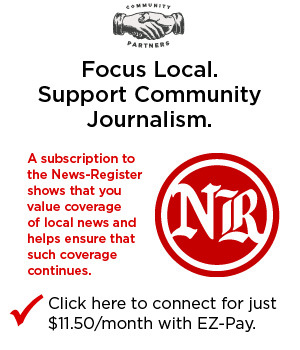The Conversation: Art of navigating soft landing when economic data is mixed
With inflation easing and the economy cooling, is the Federal Reserve done raising interest rates? After all, gently bringing down the trajectory of prices without crashing the economy was the bank’s key objective when it began jacking up rates more than a year ago.
Gross domestic product, the broadest measure of an economy’s output, expanded at an annual pace of a mere 1.1% in the first quarter, according to data released April 27. That compares to 2.6% in the final three months of 2022. And inflation has slowed to less than 5% on an annualized basis, the lowest in about a year.
Unfortunately for consumers and businesses weary of soaring borrowing costs, the Fed’s not likely done hiking rates quite yet. There could be several more increases to come.
But this raises another important question: With all the conflicting data, varying narratives, bank failures and tech layoffs, is the Fed close to engineering the soft landing it’s been hoping for?
The GDP data is a mixed bag, but provides some clues.
Overall, recent GDP figures suggest a likely economic slowdown going forward, due largely to a drawdown in inventories. Rather than ordering new goods, companies are relying more on stuff currently in storage.
Businesses seem more inclined to sell what is on hand rather than order up new products, likely in anticipation of a slowdown in consumption. And business investment declined 12.5% in the first quarter.
At the same time, consumer spending, which represents about two-thirds of GDP, grew at a healthy 3.7% pace. And investment in equipment such as computers and robotics increased 11.2%, though this category is quite volatile and could easily turn in subsequent quarters.
Other data also points to a slowdown, such as a decline in new orders for manufactured goods. This, combined with the drawdown in inventories in the GDP report, might suggest that businesses are anticipating a slowdown in demand for goods and services.
When we look at the labor market, while job increases have been strong — 334,000 over the past six months — job openings have been declining. After peaking at about 12 million in March 2022, openings dropped to about 9.9 million as of February, according to the Bureau of Labor Statistics.
In terms of inflation, we can also see conflicting numbers.
The headline consumer price index has indeed slowed steadily since peaking in June 2022 at 9.1%. But the core preferred consumption index, the Fed’s favored measure of inflation, has remained stubbornly elevated.
The latest data, released on April 28, showed the index, which excludes volatile food and energy prices, up 4.6% in March from a year earlier.
Meanwhile, wages, which can exert a strong upward push on prices, climbed at an annualized 5.1% in the first quarter. That’s down from the peak of 5.7% in the second quarter of 2022, but still about the fastest pace of wage gains in at least two decades.
So what might all this suggest?
With the inflation rate still well above the Fed’s target of about 2%, combined with continued job growth and a low unemployment rate, the central bank is likely not done ratcheting up rates.
Future data will guide future rate increases. But I believe large rate increases are well in the past.
That brings us back to the big question: How close is the Fed to sticking a soft landing, in which the U.S. economy manages to tame inflation without a recession? Sadly, it’s too early to tell.
Labor markets can be very volatile. And political and international events — such as potential gridlock on debt ceiling talks or further escalations in the Ukraine War — can turn things upside down.
That said, we are either looking at a mild recession or a growth recession. So what’s the difference?
A growth recession signals a weak economy. but not enough to significantly drive up unemployment. And that’s preferable to even a mild recession of multiple quarterly drops in GDP and much higher unemployment.
We just don’t know which is more likely. What I think is true now, though, is that, barring any catastrophic and unpredictable events, a severe recession has been avoided.
From The Conversation, an online repository of lay versions of academic research findings found at https://theconversation.com/us. Used with permission.












Comments